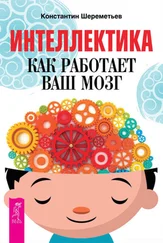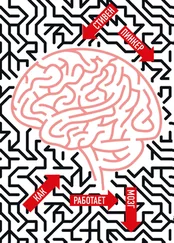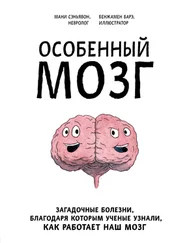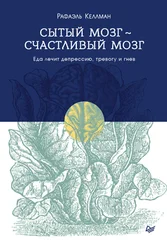Rodriguez, T., Negative Emotions Are Key to Well-Being, Scientific American. 2013, Tori Rodriguez.
Adkins, A., U. S. Employee Engagement Steady in June. 2016, GALLUP.
André Spicer, C.C., The Research We’ve Ignored About Happiness at Work. 2015, Harvard Business Review.
Van Kleef, G.A., C. K. De Dreu, and A. S. Manstead, The interpersonal effects of anger and happiness in negotiations. Journal of personality and social psychology, 2004. 86 (1): p. 57–76.
Ferguson, D., The world’s happiest jobs. 2015, @guardian.
Peralta, C.F. and M. F. Saldanha, Can dealing with emotional exhaustion lead to enhanced happiness? The roles of planning and social support. Work & Stress, 2017. 31 (2): p. 121–144.
Mauss, I.B., et al., The pursuit of happiness can be lonely. Emotion, 2012. 12 (5): p. 908.
Theeuwes, J., Top – down and bottom – up control of visual selection. Acta Psychologica, 2010. 135 (2): p. 77–99.
LoBue, V., et al., What accounts for the rapid detection of threat? Evidence for an advantage in perceptual and behavioral responding from eye movements. Emotion, 2014. 14 (4): p. 816–23.
Jabbi, M., J. Bastiaansen, and C. Keysers, A Common Anterior Insula Representation of Disgust Observation, Experience and Imagination Shows Divergent Functional Connectivity Pathways. PLOS ONE, 2008. 3 (8): p. e2939.
Clarke, D., Circulation and energy metabolism of the brain. Basic neurochemistry: molecular, cellular and medical aspects, 1999: p. 637–669.
Miller, G., The mating mind: How sexual choice shaped the evolution of human nature. 2011: Anchor.
Dunbar, R.I., The social brain hypothesis and its implications for social evolution. Ann Hum Biol, 2009. 36 (5): p. 562–72.
Flinn, M.V., D. C. Geary, and C. V. Ward, Ecological dominance, social competition, and coalitionary arms races: Why humans evolved extraordinary intelligence. Evolution and Human Behavior, 2005. 26 (1): p. 10–46.
Reader, S.M. and K. N. Laland, Social intelligence, innovation, and enhanced brain size in primates. Proceedings of the National Academy of Sciences of the United States of America, 2002. 99 (7): p. 4436–4441.
Spradbery, J.P., Wasps. An account of the biology and natural history of social and solitary wasps, with particular reference to those of the British Isles. 1973.
Gavrilets, S., Human origins and the transition from promiscuity to pair-bonding. Proceedings of the National Academy of Sciences of the United States of America, 2012. 109 (25): p. 9923–9928.
West, R.J., The evolution of large brain size in birds is related to social, not genetic, monogamy. Biological journal of the Linnean Society, 2014. 111 (3): p. 668–678.
Bales, K.L., et al., Neural correlates of pair-bonding in a monogamous primate. Brain Research, 2007. 1184: p. 245–253.
Dunbar, R.I.M. and S. Shultz, Evolution in the social brain. science, 2007. 317 (5843): p. 1344–1347.
Pasquaretta, C., et al., Social networks in primates: smart and tolerant species have more efficient networks. Scientific reports, 2014. 4: p. 7600.
Van Gestel, S. and C. Van Broeckhoven, Genetics of personality: are we making progress? Molecular psychiatry, 2003. 8 (10): p. 840–852.
Matsuzawa, T., Evolution of the brain and social behavior in chimpanzees. Current Opinion in Neurobiology, 2013. 23 (3): p. 443–449.
Gunaydin, Lisa A., et al., Natural Neural Projection Dynamics Underlying Social Behavior. Cell. 157 (7): p. 1535–1551.
Gardner, E.L., Introduction: Addiction and Brain Reward and Anti-Reward Pathways. Advances in psychosomatic medicine, 2011. 30: p. 22–60.
Loken, L.S., et al., Coding of pleasant touch by unmyelinated afferents in humans. Nat Neurosci, 2009. 12 (5): p. 547–548.
Iggo, A., Cutaneous mechanoreceptors with afferent C fibres. The Journal of physiology, 1960. 152 (2): p. 337–353.
Insular cortex – Wikipedia. 2017; Available from: https://en.wikipedia.org/wiki/Insular_cortex.
Kalueff, A.V., J. L. La Porte, and C. L. Bergner, Neurobiology of grooming behavior. 2010: Cambridge University Press.
Claxton, G., Why can’t we tickle ourselves? Perceptual and Motor Skills, 1975. 41 (1): p. 335–338.
Keverne, E.B., N. D. Martensz, and B. Tuite, Beta-endorphin concentrations in cerebrospinal fluid of monkeys are influenced by grooming relationships. Psychoneuroendocrinology, 1989. 14 (1): p. 155–161.
Gispen, W.H., et al., Modulation of ACTH-induced grooming by [DES-TYR1] -γ-endorphin and haloperidol. European Journal of Pharmacology, 1980. 63 (2): p. 203–207.
Dumbar, R., Co-Evolution of neocortex size, group size and language inhumans. Behavioral and Brain Sciences, 1993. 16 (4): p. 681–735.
Dunbar, R. and R.I.M. Dunbar, Grooming, gossip, and the evolution of language. 1998: Harvard University Press.
Crusco, A.H. and C. G. Wetzel, The Midas Touch. Personality and Social Psychology Bulletin, 1984. 10 (4): p. 512–517.
Dumas, G., et al., Inter-Brain Synchronization during Social Interaction. PLOS ONE, 2010. 5 (8): p. e12166.
Livingstone, M.S. and D. H. Hubel, Anatomy and physiology of a color system in the primate visual cortex. Journal of Neuroscience, 1984. 4 (1): p. 309–356.
Rizzolatti, G., et al., 14 From mirror neurons to imitation: facts and speculations. The imitative mind: Development, evolution, and brain bases, 2002. 6: p. 247–266.
Wicker, B., et al., Both of Us Disgusted in My Insula. Neuron, 2003. 40 (3): p. 655–664.
Schulte-Rüther, M., et al., Mirror Neuron and Theory of Mind Mechanisms Involved in Face-to-Face Interactions: A Functional Magnetic Resonance Imaging Approach to Empathy. Journal of Cognitive Neuroscience, 2007. 19 (8): p. 1354–1372.
Shamay-Tsoory, S.G., J. Aharon-Peretz, and D. Perry, Two systems for empathy: a double dissociation between emotional and cognitive empathy in inferior frontal gyrus versus ventromedial prefrontal lesions. Brain, 2009. 132 (3): p. 617–627.
de Waal, F.B.M., Apes know what others believe. Science, 2016. 354 (6308): p. 39.
Brink, T.T., et al., The Role of Orbitofrontal Cortex in Processing Empathy Stories in 4- to 8-Year-Old Children. Frontiers in Psychology, 2011. 2: p. 80.
Hall, F.S., Social deprivation of neonatal, adolescent, and adult rats has distinct neurochemical and behavioral consequences. Critical Reviews™ in Neurobiology, 1998. 12 (1–2).
Читать дальше
Конец ознакомительного отрывка
Купить книгу












